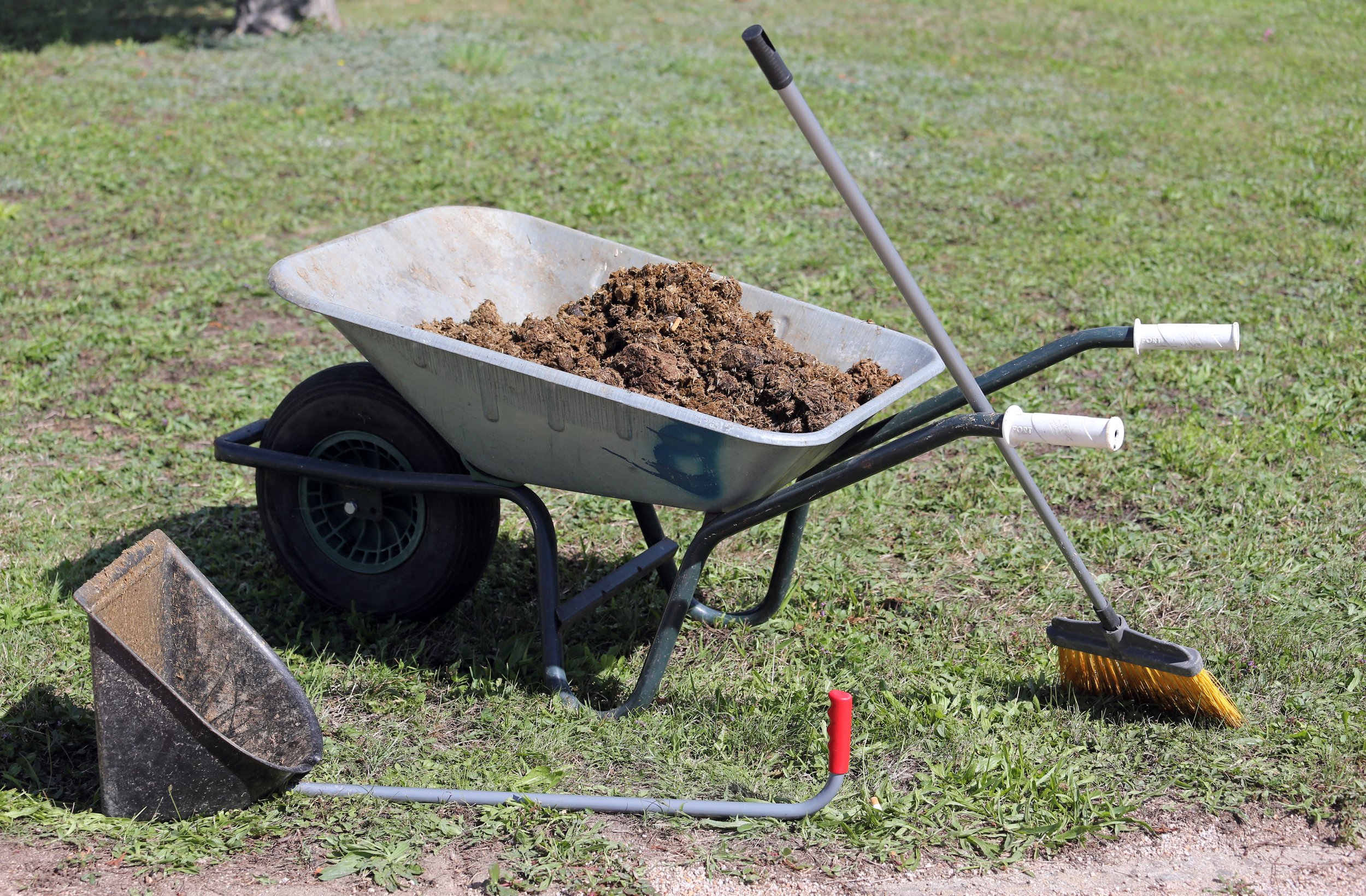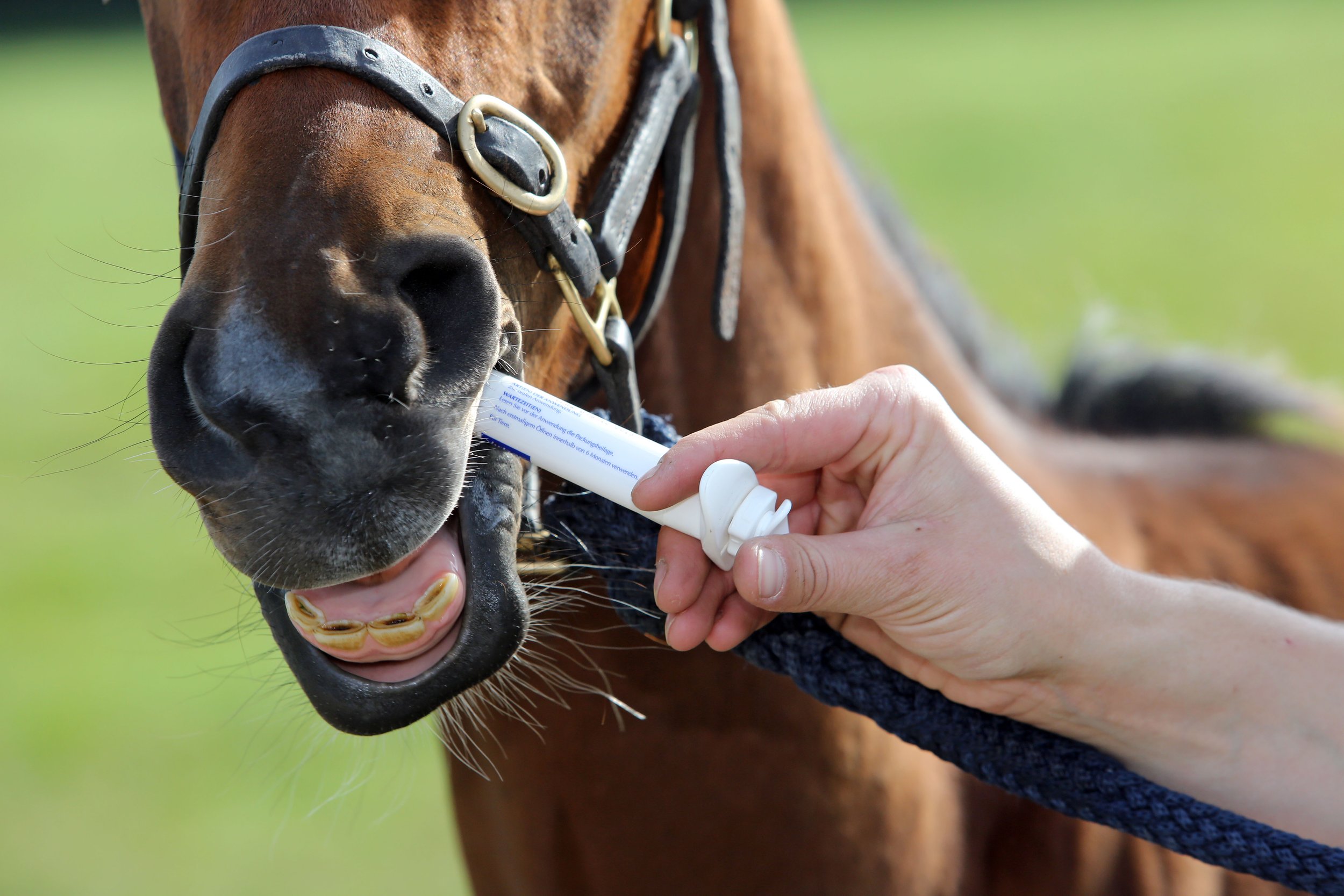To worm or not to worm? Addressing the dilemma of worming treatment decisions for horses in training
/Article by Jacqui Mathews
All horses are exposed to parasitic worms at some point in their lives. It is not possible to eradicate all worms from all horses, nor completely avoid the risk of worm-associated disease, so some level of parasite control is necessary in any environment where horses are kept. Traditionally, regular all-group wormer (anthelmintic) treatments were used to control these parasites, regardless of the management conditions. Increasing reports of wormer resistance over the last two decades [1] indicate this is no longer sustainable and will only act to worsen the situation, especially as no new wormers are coming to market any time soon. It is essential to take an approach that safeguards the effectiveness of anthelmintics. As common equine worms are spread via grass (Fig. 1), and horses in training do not routinely graze for significant periods (so are at lower risk of infection), they represent ideal candidates for diagnostic-led programmes.
The worms that turned
The main worms of concern for horses in training are small redworms and tapeworms. Young horses (<2 years-old) may also be infected with ascarids. Small redworms can cause weight loss; in heavy infections (10,000s-1,000,000’s worms), this can be severe and accompanied by diarrhoea and/or colic. Tapeworms can cause colic but at a lower infection level; burdens of >20 tapeworms have been shown to cause gut damage. Ascarids are more likely to be problematical on studs; infections usually peak in 4-8 month-old foals, with a gradual reduction in susceptibility due to immunity. Immunity takes longer to develop against small redworms and tapeworms and a few horses remain susceptible throughout life, especially when exposed to heavily-contaminated paddocks and/or have medical conditions that affect their immunity.
Wormers available include fenbendazole, pyrantel salts (double dose for tapeworms), ivermectin, moxidectin and praziquantel (tapeworms only). Resistance to these wormers has been reported in small redworms (benzimidazole resistance is ubiquitous, with reports of resistance to all other wormers), ascarids (especially resistance to ivermectin) and tapeworms (pyrantel and praziquantel resistance was recently reported [2]). If effective worm killing is not achieved due to the presence of resistance, a situation could occur where veterinarians are unable to effectively treat horses that present with disease due to heavy burdens. It is therefore essential to reduce the amount of wormers administered and only treat horses when an assessment indicates that worming is necessary.
Risk assess to consider if horses are likely to be infected with worms
Be aware of the risk factors for worm infection, with age and access to contaminated grass key features. As most horses in training have no/limited access to pasture, they should be at low risk of infection, especially horses >4 years. Yearlings, 2- and 3-year-olds are more likely to have higher burdens, especially small redworm; this should be taken into account when planning testing and treatment options (see below). Older horses (>15 years), used as riding horses or companions, may also have higher burdens so can act as potential sources of contamination.
Regular assessment with your veterinarian of the risk of infection to the individual or group enables danger zones in management practices to be identified, addressed, and the impact of improvements monitored over time. Include sufficient detail in the assessment so that seemingly innocuous practices that increase risk (for example, short daily turn-outs) can be identified and action taken. Risk assessment will:
Inform which tests to perform, test frequency and which horses to include
Indicate the need for strategic treatments; for instance, small redworm larvicidal therapy in high-risk (younger) horses where tests cannot be used to guide treatment decisions
Provide information on potential worm exposure and the need to reduce the opportunity of horses being infected (at the yard or elsewhere).
Tests provide information to help treatment decisions
Diagnostics are essential for making informed decisions about worming and for selecting which product to use, whilst reducing selection for resistance. Tests available include faecal egg count (FEC) and antibody-based assays.
FEC tests estimate the number of worm eggs a horse is passing in dung (a measure of contamination potential) and provide information on the type of eggs excreted. On racing yards, testing is recommended every 12-16 weeks. Usually, ~80% of horses excrete ~20% of the eggs passed [3], meaning that many individuals have no/low worm egg shedding and will not need treatment, thus preserving wormers. Horses estimated as passing >200 to >500 worm eggs per gram (epg) dung are recommended for treatment. When collecting a dung sample, select at least three balls from the pile, with a minimum of 5 grams placed in a pot/bag with all air excluded and the samples kept cool. FEC reduction tests should be conducted once a year to provide information on effectiveness of the wormers being used to target small redworm.
FEC tests only detect the products of egg-laying adult worms and are not reliable indicators of the burden within an individual, especially as male and immature worms are not detected. In the case of tapeworm, FEC methods are also affected by inconsistent release of egg-containing segments from adult worms so are not recommended for identifying infection with this parasite. Instead, tests that detect antibodies can be utilised to provide information on the level of tapeworm or small redworm infection in individuals.
Tapeworm antibody tests are available in saliva and blood formats. Both work on the principle of measuring worm-specific antibodies, levels of which show a strong positive relationship with tapeworm burden. The tests have been shown to accurately identify all horses that harbour clinically-relevant burdens of >20 tapeworms [4]. Testing identifies horses that will contaminate areas where horses graze, as well as those harbouring burdens that may put them at risk of colic. All horses should be tested at the same time to identify those that need anti-tapeworm treatment; ideally, in combination with tests that detect small redworm infection (FECs or small redworm blood test). By doing this, the correct worming product can be selected based on the test data (Fig. 2). Testing can be performed once or twice a year, depending on the level of risk identified at the initial assessment and informed by ongoing data. Tapeworm testing results in large reductions in anthelmintic use; from 2015-2022, >164,000 UK horses were assessed using the saliva test and only 1/3 were recommended for treatment [5]. In the unlikely event where many horses test tapeworm-positive on a yard, the source of infection needs to be identified and management rectified to reduce transmission via oribatid mites.
It was previously recommended to treat all horses for small redworm encysted larvae in late autumn/winter. As it acts to select resistance, routine all-group treatment is no longer advised for horses at low risk of infection. Horses in training will usually fall into this category. For low-risk horses, the options are to not administer this treatment, or use the Small Redworm Blood Test. Similar to the tapeworm tests, this measures worm-specific antibodies and demonstrates high sensitivity in identifying horses with low small redworm burdens that do not require treatment. The test can be utilised in autumn/winter when it is more likely that small redworm encysted larvae, that are not detected by FEC tests, are present. Applying the test in low-risk sport horse groups demonstrated that many horses (>60%) fell below the low 1,000-small redworm threshold [5].
Horses in training can test positive by any of these methods, despite the fact that they do not graze for significant periods. This is because they can become exposed to worm infections during short turnout periods, or if they are allowed to graze on training grounds or at the race course. Wherever there is dung deposited, there may be worms!
In the case study (Fig. 3), tapeworm and small redworm serum scores in December are shown from horses based at a training yard in the UK. The results demonstrated negligible burdens (<1,000 worms) of small redworms in ~1/3 of the group, with only 14% of horses recommended for tapeworm treatment. These horses had 30 minutes turnout to a small paddock each day; dung was not removed from this paddock, providing a source of worm infection. The veterinarian subsequently advised the trainer to remove dung daily from the paddock and to treat test-positive horses with a larvicidal anthelmintic and, where indicated, an anti-tapeworm treatment. These horses previously received regular all-group treatments, so although blood testing recommended a proportion to be wormed, this strategy reduced worming frequency overall and, importantly, provided the trainer with insights regarding management procedures.
Advice for horses new to a yard
The introduction of newcomers or the return of previous residents to a yard risks introduction of ‘new’ parasites. All new arrivals should be isolated, tested (FEC/small redworm blood test, tapeworm test) and wormed based on the results. For small redworm, a FEC reduction test should be performed to assess wormer sensitivity of the parasites the horse is carrying. Ideally, keep the horse away from grazing in the interim, or at least prevent access to turnout paddocks for 3 days after worming to stop transmission of eggs that are excreted after treatment.
In conclusion
Few studies have examined worm prevalence, control practices or effectiveness of anthelmintics on training yards. Those that have, indicate industry-wide overuse of wormers, with few trainers using evidence-based methods [6]. The racing industry must avoid the legacy of spreading drug-resistant worms to other parts of the sector. Once horses retire from training, they enter a spectrum of environments where the introduction of wormer-resistant parasites could prove extremely detrimental, particularly, breeding enterprises where susceptible young animals will co-graze with mares, or retirement homes/sanctuaries containing geriatric horses that may be more prone to worm-associated disease. The introduction of drug-resistant parasites to leisure riding establishments or yards focused on eventing, show jumping or dressage, would be viewed as a negative sequelae of the over-use of anthelmintics in the training sector. Given the amount of attention paid to the health and physiology of racehorses, trainers, working with their veterinarian, are perfectly poised to adopt worm control plans designed to meet the needs of the individual by following a diagnostic-led approach. An exemplar control plan is shown in Fig. 4.
References
Nielsen 2022. Int J Parasitol Drugs Drug Resist. 20;76-88.
Nielsen 2023. Int J Parasitol Drugs Drug Resist. 22:96-101.
Relf et al. 2013. Parasitology 140:641-652.
Lightbody et al. 2016. Vet Clin Pathol. 45:335-346.
Matthews et al. 2024. In Practice 46:34-41.
Rosanowski et al. 2016. Equine Vet J. 48:387-93.












